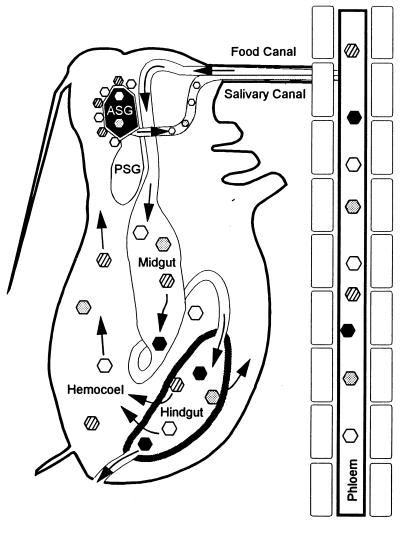FIG. 4.
Circulative route of barley yellow dwarf luteoviruses (BYDVs) through aphids. All BYDV strains can be ingested from phloem into the aphid’s alimentary canal and arrive in the hindgut intact. The hindgut epithelium is the first transmission barrier; most BYDVs can bind to hindgut epithelial cells and be transported into the hemocoel, but some are excluded (solid hexagons). BYDVs acquired in the hemocoel must migrate to the ASG. The basal lamina of the ASG may selectively filter BYDVs or may concentrate virions, thereby increasing the efficiency of transport into the ASG. BYDVs (gray hexagons) not concentrated at the ASG may be transported into the ASG if they encounter it, but the efficiency of transmission is low. BYDVs may be concentrated at the ASG but be prevented from entering the ASG by an inability to bind to the ASG plasmalemma and initiate endocytosis (striped hexagons). Efficiently transmitted BYDVs are concentrated at the ASG and efficiently transported in the ASG and the salivary canal (open hexagons). Reprinted from reference 127 with permission of the publisher.

